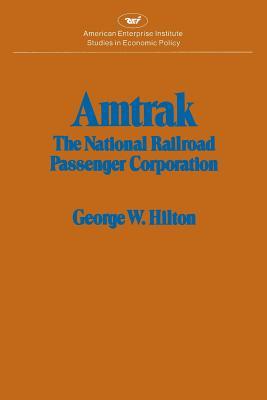Amtrak: The National Railroad Passenger Corporation, by George W. Hilton, deals with the system Congress inaugurated in 1971 to prevent the demise of the intercity passenger train. Operation of the trains by the federally established corporation, however, has not been a success. The trains have never carried more than a third of the 1 percent of Americans traveling between cities, and the system has lost over $1.8 billion.
Professor Hilton demonstrates that the program failed because of a fallacious interpretation of the decline of the passenger train. In general, the people who value time most were the first to desert the passenger train for alternatives, and consequently the demand for luxury accommodations declined more rapidly than did coach ridership. Many observers concluded that the railroads were discouraging use of the trains by downgrading the quality of the service. The Amtrak program was based on a presumption that ridership could be restored by improving the quality of service. Actually, the public has responded much more to fare reductions and to schedule frequency than to provision of luxury.
Hilton concludes that Amtrak serves no useful function in the national transport network, but is rather a subsidy to a limited number of people who value rail travel as a form of consumption. By analogy to the similar subsidy of American flag passenger ships, he predicts that Amtrak will eventually pass out of existence.
